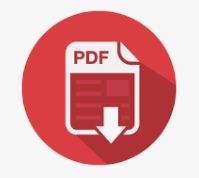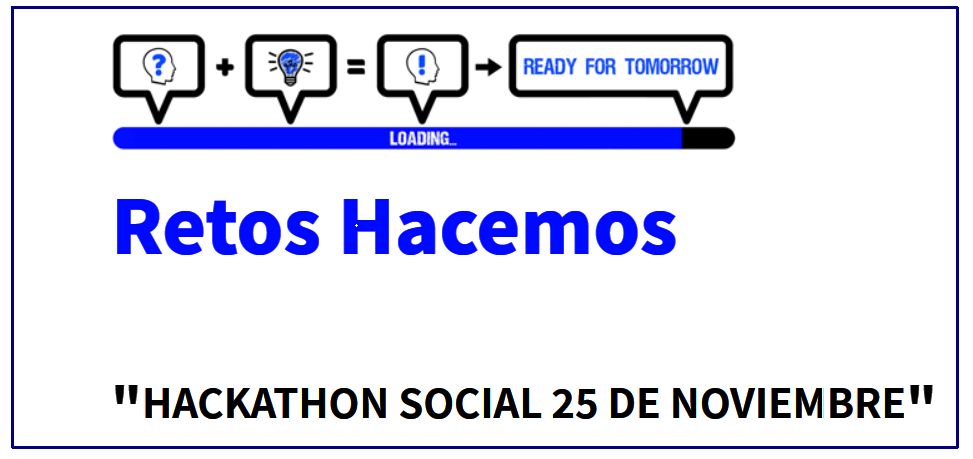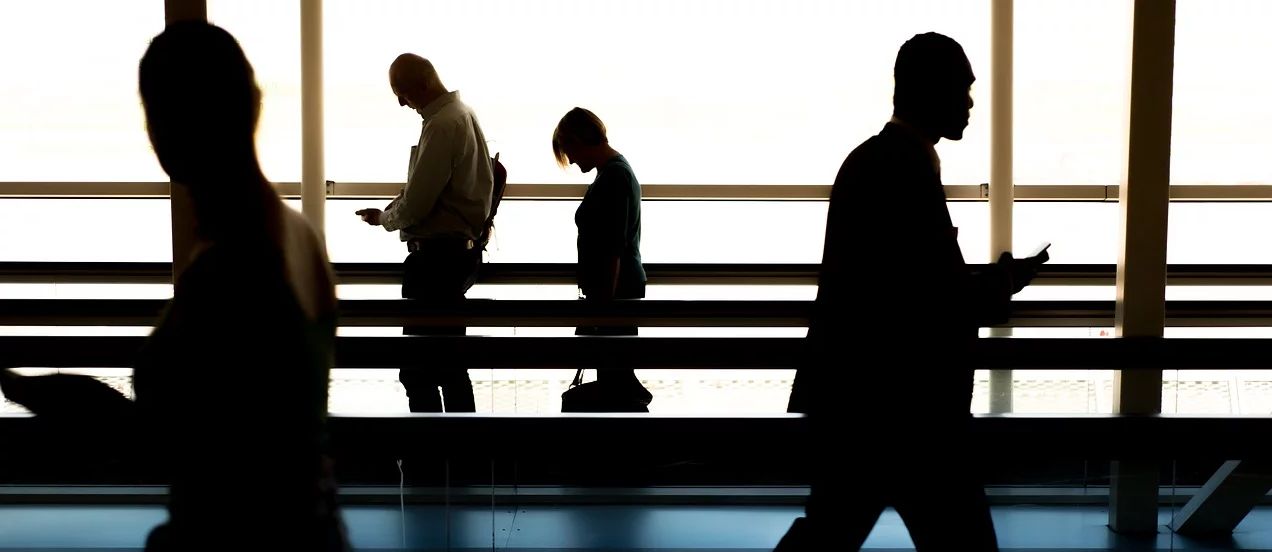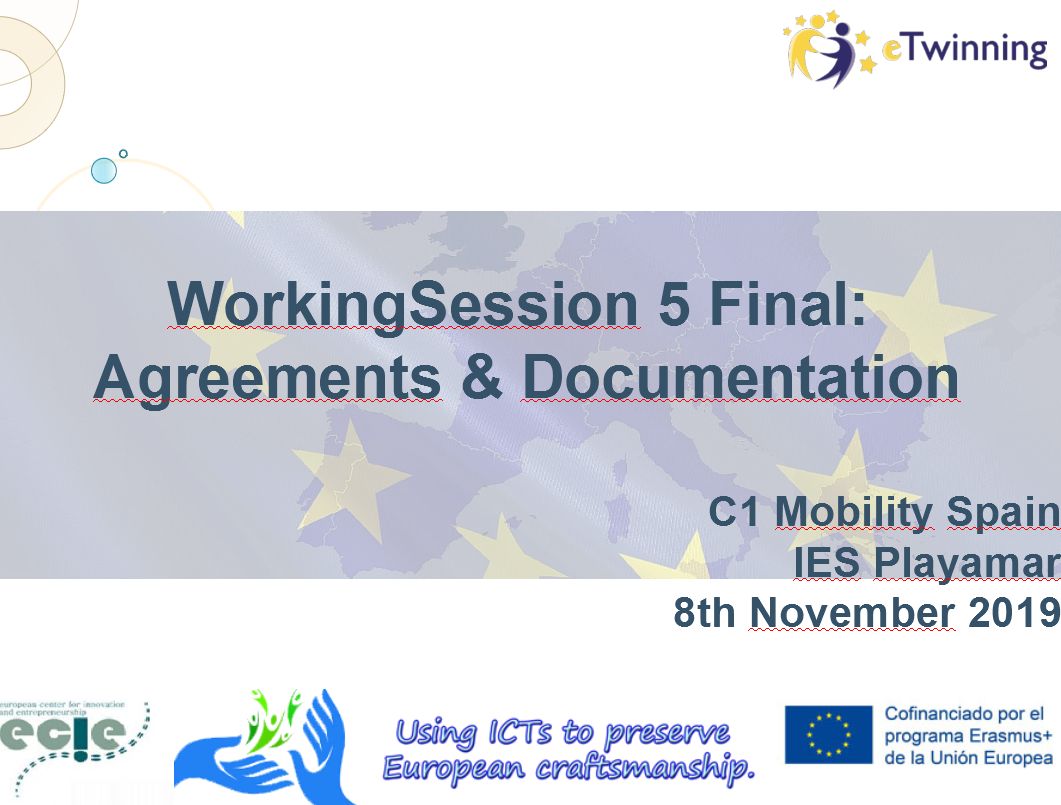Informations related to
How to upload your students to Etwenning Virtual Workshop
Some profesors of the eucraft project found some problems when creating the users f their students to Etwenning and to solve it we proposed this workshop of the How to upload your students to Etwenning
This workshop take place the day 18/01/2021 by videoconferece I upload here the document used as presentation
Participation in Hackaton Tech 2020
Eucraft students partipates in the HACKATHON TECH contest to create some of the products of the project.
“A technological challenge applied to health, wellness or industry.
If you like everything that falls into your hands, you like programming and you love gadgets, then you have Technological Talent.
Smart Cities, IoT-Internet of things, Raspberry Pi, Home automation and smart homes, wearables … we want to know that idea and we want you to come”
https://hacemos.andaluciaemprende.es/es/retos-hacemos/detalle-retos/HACKATHON-TECH-27-DE-NOVIEMBRE/
Mobility C2 United Kingdom – European Congress: “Collaborative entrepreneurship between european schools”
This Mobility C2 United Kingdom Mobility has been configurated as the 2nd European Congress: “Innovative methodologies for the implementation of international educational projects” of the Project : Using ICTs to preserve European Craftsmanship. with code 2019-1-ES01-KA219-065673
In this congress Teachers and students from the diffents schools of the erasmus project participated in the following activities : cultural activities, formation sessions , Working Sessions.
Mandatory Planned Activities
- A7 Connection between skills in schools and the world of work.
- A8 Artisan women entrepreneurs.
- A9 CANVAS model in crafts.
- A10 Financial education for craft trades.
- A11 Marketing 3.0 in crafts.
You can download the pdf document here
Sunday 23rd
Welcome day
- Arrival Times (Approximate arrival times in Sittingbourne in brackets)
- Estonia: 16.45 (Gatwick) [20:00]
- Czechia: 16:50 (Stansted) transport to Sittingbourne via minibus) [19:30-20:00]
- Iceland: 14:25 (Gatwick) EZY8504: Easy Jet [17-17:30]
- Lithuania: 13:00 (Luton) FR3469 [16:00]
- Spain: 11:25 (Gatwick) (transport to Sittingbourne via minibus) [14.30-15:00]
Staff drinks and light food @ The Golden Hope, Sittingbourne from 7pm onwards
Monday 24th
- Opening Ceremony @ Fulston Manor School
Activity A9: CANVAS model in handicraft.

Workshop: Introducing the Canvas Business Model and aims of the week
Creative Arts Workshops
- Trip to University of Creative Arts, Rochester for creative workshops


Train departs Sittingbourne @ 11:13/ Arrive @ Chatham @ 11:31
Activity A7: Connection between competences in schools and the world of work.
- Activity A7: Connection between competences in schools and the world of work.
- We will Visit to Tatty Devine Studio (https://www.tattydevine.com) a renamed uk artist speciialized in Fashion and Jewellery . She will make us a nice conference.
- Fashion and Jewellery groups will make a Design workshop.

- Depart UCA @ 13:15
- Depart from Tatty Devine @ 15:15
- Train departs Chatham @ 16:05 /Arrive @ Sittingbourne @ 16:21
- Staff meal @ Galata Mezze, Sittingbourne @ 19:00 [14 people]
Tuesday 25th
Arrive @ Fulston Manor: 8:30
Activity A8: Entrepreneurial artisan women Natasha Steer

- Natasha Steer is one of the most renewed local artist in kent region. She will present us its project CREATABOT . A great tool to improve the Creativity and and also Guest Presentation: Life as a Creative Practitioner
- Natasha Steer https://creatabot.co.uk
- Students will have The Opportunity for Interviews with Natasha Steer
Workshop 1: Using Powtoon (Lauren Relf)

Lauren Relf a renewed artist and author will make for us a brief introduction to one of its dailywork tool: Powtoon
Workshop 2: Creating a Tile Transfer for Murals and Fashion Pieces (Jo Smith)

Project Activity: Creating Promotional Videos about Craft
- Trip to Canterbury:
- Photo-Bucket Challenge for students
- Train departs Sittingbourne @ 12:01 /Arrive & Canterbury @ 12:21
- Lunch for staff @ The Corner House @ 14:30
- Train departs Canterbury @ 16:14 /Arrive & Sittingbourne @ 16:43
- Staff: Free Time//Option: Drinks @ The Man of Kent, Rochester
Wednesday 26th
- Arrive @ Fulston Manor: 8:20
- Trip to London: Design Museum and Walking Tour
- Activity : Coach to Design Museum. Depart from FMS @ 8:40
- Activity : Visit to the Design Museum and the Beazley Design Awards Exhibition

Activity A11: Marketing 3.0 in crafts.
Interviews @ The Design Museum:
Akram Fahmi (https://1508london.com/) for Architecture and Furniture groups
Sebastien Stobbs (http://www.conquergear.com/) for Fashion group


- Important hours
- Walking tour: 12:45- 14:30
- Staff lunch @ TitBits, Heddon Street @ 14:30
- River Thames Clipper trip @ 16:00
- Coach from Greenwich @ 17:30pm. Arrive @ FMS @ approx. 19:00
- Staff: Free Time//Option: Drinks @ The Golden Hope
Thursday 27th
- Arrive @ Fulston Manor: 8:30
- A10: Financial education for craft trades
- Guest Presentation: Innovative Business Ideas in the Creative Industries
- Katie Briggs https://www.thetextilereview.com/
- Interviews with Katie Briggs for Textiles and Fashion Groups
- Interviews with Sarah Fisherman for textiles and fashion groups
- Project work: Creating Promotional Videos about Craft
- Visit to Chatham Dockyard
- Coach departs FMS @ 11:45
- Arrive @ Chatham Dockyard @ 12:15
- Interview Opportunity:
- Sam Hall and Barry Fentiman (https://www.wordsmithery.info/) for Written Word group
- Daniel Cooper (https://www.darkironfab.co.uk) for Furniture group
- Coach departs Chatham Dockyard @ 16:10
- Arrive @ FMS @ 16:45
- Special Staff Event @ The Cheese Room, Rochester (19:30-22:00)
Friday 28th
- Arrive @ Fulston Manor: 8:30
- Project work: Creating Promotional Videos about Craft
- Project Work: Creating Fashion Pieces
- Final Ceremony official start time: 14:00
- Departure of Czech team @ approx. 16:00
- Evening meal & bowling in Chatham
- Train departs Sittingbourne @ 17:38 /Arrive & Chatham @ 17:55
- Meal for 40 students @ 18:00 Spoons World Buffet & Bar, Chatham
- Meal for 12 staff @ Sultan, Chatham @ 18:00
- Bowling for staff and students @ Chatham Bowl
- Train departs Chatham @ 21:43 /Arrive & Sittingbourne @ 22:00
- Train departs Chatham @ 21:57 /Arrive & Sittingbourne @ 22:15
- Option: Drinks @ The Golden Hope
Saturday 29th
Departure Times
- Czechia: Departure Friday 28th 20:20
- Estonia: Departure Saturday 29 Feb 17.45
- Iceland: Departure Saturday 29th 15:30
- Lithuania: Departure Saturday 29th 17:55
Activity proposal in E-twinning for students of the UIPEC project
The Explicative document about this activity is here : Activity proposal in E-twinning for students of the UIPEC project
a) Activity Justification
We must create with the collaboration of the students, the following materials
- a) The Virtual Museum of European crafts.
- b) App of the Virtual Museum of European crafts
- c) Etwinning channel
Etwinning is perfect for working with students but Etwinning is not very attractive so we will use Etwinning for students to keep their “Work on the crafts of each country” but also they must also fill in a google forms with information about the crafts. this form will facilitate the work to create the museum and the rest of obligatory final products for our project.
b) Distribution of tasks among students
1) Creation of the group of students. Each student / group of students (This can be organized as you wish) should do a “job” on “some of the crafts of Europe.”
2) We have established the following categories of crafts that will lead to the different rooms of the virtual museum:
- 4.1) Glass, ceramic and pottery
- 4.2) Vegetable fibers
- 4.3) Wood
- 4.4) Marble, stone and plaster
- 4.5) Metal and ironwork
- 4.6) Fur and skin
- 4.7) Textile
- 4.8) Jewelery
- 4.9) Musical instruments
- 4.10) Others
Students should look for crafts that are made in your country for the largest possible number of “rooms” (ceramic, glass, Wood…). The idea is that each country made several of each of the “rooms”, although they can also choose from other countries that are not in the project.
It is important that you distribute to each student / group a specific type of craftsmanship. For example, some who investigate on “Ceramics”, others on “plant fibers”, etc … This will be many more works for the museum.
Each teacher can distribute them among the students and evaluate them as they wish in Spain, they are being done as a class work for a subject and it is also part of the scale to select the students who will travel.
3) To facilitate the subsequent processing of the information collected. All jobs must have the same index. We propose the following, which is what our students are following:
- Index
- 1) Geographic Area
- 2) Craft characteristics
- 3) The technique
- 4) Used materials
- 5) History
- 6) YouTube Vídeos
- 7) Gallery
c) Student Work
As work students can create Powerpoints, videos or pdf documents
I send you some of the examples that students in Spain are already doing.
I pass the links of some who have already made the students of Spain
https://twinspace.etwinning.net/files/collabspace/8/68/268/89268/files/bfc4c616.pptx
https://twinspace.etwinning.net/files/collabspace/8/68/268/89268/files/b9a6882b.pptx
https://twinspace.etwinning.net/files/collabspace/8/68/268/89268/files/c6127b430.pdf
D) Delivery of works
The students will deliver the works by etwinning and by the work form. It is mandatory that they be delivered in two ways to comply with the commitments made in the project application:
1) By Etwinning:
In etwinning in should
1st) Access the page https://twinspace.etwinning.net/89268/pages/page/704263
2nd) Login with your user in login
3) Go to the “page” tab.
4º Add a File with your work Clicking on “Add item” in each of the handicraft categories (Ceramic, glass, textile…)
5th) When uploading, put in the “name” field: “country, region. name of the Craft ”and as“ description ”the name of the students.
2) Google Forms IMPORTANT
Students will also have to fill in the following google form to create the rest of the final products of the project:
Enter https://forms.gle/1QyNpHZNdxdoohk67
and fill in the fields following the instructions on the form.
Final Products
Project Final Products Coordinators Responsabilities
Final Products
A0: Etwinning Channel
A35: Evaluation plan.
A36: Dissemination plan – Website & Social Networks A37: Online Radio
A38: Didactic Units on entrepreneurship A39: Translation (three languages) of the final products A40: Multichannel online platform.
A41: Entrepreneurship Crafting Board game made 3D printing
A42: Virtual crafting museum web. A43: App with trades at risk getting lost. A44: Collaboration Network
A0: Etwinning Channel
• Activities
• Establish Activities to dinamize our students in Etwinning
• Prepare forums between our students to share our products
• Prepare Video Conferences between our students to share our experiences
• Activities each member
• Insert our Students in the platform
• Create the pages about your school .
• Make our students work in the forums , chats & video conferences.
• Upload the activities developed in your own Mobility
• Upload links to the Products
A44: Collaboration Network
• Activities
• Create the collaboration network in the way of a NGO
• Create a Website for this Network
• Activities each member
• Sign the agreement document
A35: Evaluation plan.
• Activities
• Create a form in google forms after each mobility to test the quality of the activities
• Send this form to each partner participating
• Create Final report
• Activities each member
• Fill the forms after each mobility to test the quality of the activities
A36: Dissemination Plan – Etwinning & Social Networks.
• Activities
• Create the Social Networks (Twitter,Instagram,)
• Dinamize the Social Networks (Look for users, ask for likes)
• Update the Social Networks with the news
• Upload Videos to Video Channel
• Activities each member
• Like our publications
• Follow our acounts and make our students follow them.
A37: Online Radio
• Activities
• Create a Online Radio Channel in SoundCloud or other
• Prepare interviews between our students .
• Upload these interviews to Radio Channel
• Dinamize the radio channel
• Activities each member
• Participe in our interviews.
• Like our interviews .
• Follow our acounts and make our students follow them.
A38: Didactic Units on entrepreneurship.
• Activities
• Create Didactic Units on entrepreneurship at Crafts
• Convert them to Exelearning
• Upload them to the site
A39: Translation (three languages) of the final products.
• Activities
• Translate the Didactic Units from English to each language
• Translate the Museum Descriptions to each language
A40: Multichannel online platform. – Website .
• Activities
• Manage the domains
• Administrate the hosting
• Develop a Visual impacting Website
• Activities each member
• Upload the activities of each mobility (one per activity)
• Upload the activities which are make in your school and have to do with the subjets of our project to the site.
A41: Entrepreneurship Crafting Board game made 3D printing
• This Activity will be concreted further in the project
• Activities
• Create the rules of the game
• Create the Board of the game
• Create the pieces of the game in 3d Printing
• Activities each member
• Help in the development of this activity
A42: Virtual crafting museum Web.
• Activities
• Create the website of the museum
• Upload the documents and videos of each documents
• Activities each member
• Help in the development of this activity.
• Send documentation about the crafts of each region.
A43: App with trades at risk getting lost.
• Activities
• Port the museum website to an android app
• Upload it to Google play
• Activities each member
• Help in the development of this activity
Dissemination
Planned Dissemination
Our strategic dissemination plan has the following dimensions:
1) Dissemination among the centers: Among the partners the dissemination of the results will be carried out using several ways. On the one hand, we will create working groups with the WhatsApp tool for teachers and the other with the Telegram tool for students. In them we will publish the different activities carried out within the framework of the project. Students will also use the eTwinning platform Through Twinspace students will be able to disseminate and share the activities that are done in each partner center through the live platform, using forums, chats or videoconferences. On the other hand, the partner professors pledged to upload the activities carried out to the project website (at least two entries per center and month). For this we will create a user to each center in a collaborative website.
2) Dissemination at local level: We will organize fairs and competitions on handicrafts to publicize the final products. We will invite local agents in which the media have an interest in providing coverage.
Implemented Dissemination of the project
Only in the eucrafts.eu webs, we have got more than 100.000 interactions, without counting on Social Networks & Newspapers. We have been granted with a Etwinning Quality Label.
Website eucrafts.eu : We have got more than 100.000 interactions in our website
(it can be checked here https://eucrafts.eu/stats-visits/ )
Twitter : We have worked in the interearcions of this Social network to count with more than 3000 followers. https://twitter.com/dtse_erasmus
Youtube: We have worked to create a very interesting Youtube channel with information about the activities in the project
Issuu / Ebook : many of the materials prepared in this project have been uploaded to this Channel for its diffussion.
Media : Several newspapers and local tv have informed of our activities.
- http://eucrafts.eu/eucrafts-in-torremolinos-tv/
- http://eucrafts.eu/eucrafts-in-polar-tv-czech-republic/
- https://www.feykir.is/is/frettir/godir-gestir-i-fnv
- http://eucrafts.eu/uipec-project-in-vilnus-lt-newspaper/
Awards : We worked in the etwining platform and got the quality label in our project
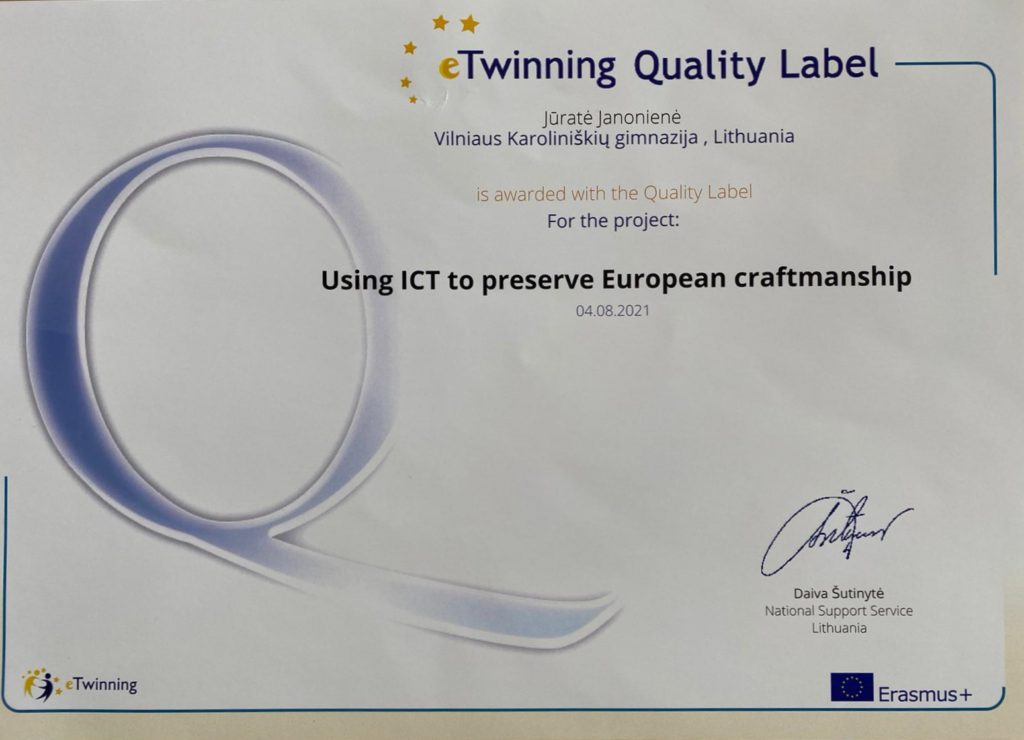
Sustainability
Participation in this project in the development of the long -term participating centers will involve a methodological and technological change. The exchange of training between centers with different potentials, but at the same time complementary, will allow the project objectives to be achieved. The way we are going to do it is by integrating the objectives of the project into our Annual Plan.We will do it in all schools.
The methodologies that we are going to learn, and exchange, are optimal for working on a competency -based curriculum. The technologies used are fundamental to guarantee in the long term the labor insertion of our students, and for the centers, they suppose some necessary tools with which to face the challenges implied by the fourth industrial revolution for the educational systems. Sustainability is guaranteed because:
1) The interactive virtual museum on craft trades, the “App” on trades at risk of being lost and teaching units, which will be published on the web and, therefore, will be freely accessible (Under Creative Commons license) . They are therefore the backbone of the sustainability of the project because they will be available beyond two years of subsidy. The work model in our project has a clear focus on social responsibility because we seek the general interest. The results of the project may be transmitted and used in other European countries.
2) The multichannel online platform is a great collaboration network that will bring together all the agents of interest in the craft sector. They will be added as through the dissemination plan in social networks it is implemented, beyond the two -year duration of the project.
The durability and involvement in that network will depend on the links between the centers, which will be strengthened through the mobilities and the network of stakeholders (associations of artisans, foundations, local and regional policy makers, universities etc). The dissemination through the media will make the project attractive to artisans and artisans, who have an opportunity to promote themselves within it. It will be available 24 hours a day and 365 days a year. With this final product we are contributing to preserve European cultural heritage, to value it and to guarantee its transmission to future generations. While reinforcing the idea that the preservation of handicrafts is linked to the concept of the circular economy.
3) The App on trades at risk of disappearing will be free to download from Playstore and will remain available after two years of project grant.
4) The personal relationships created between the members of the project teams of the associated centers will be maintained thanks to the virtual spaces, mainly through eTwinning.
Dissemination
Please describe the dissemination and use plans of the project results.How will you disseminate the results of the project within the association, to local communities and to the wider public? What are the main target groups with whom you would like to share the results? Are there other organizations or groups that will benefit from your project? Please explain how. Our strategic dissemination plan has the following three dimensions:
1) Dissemination among the centers: Among the partners the dissemination of the results will be carried out using several ways. On the one hand, we will create working groups with the WhatsApp tool for teachers and the other with the Telegram tool for students. In them we will publish the different activities carried out within the framework of the project. Students will also use the eTwinning platform Through Twinspace students will be able to disseminate and share the activities that are done in each partner center through the live platform, using forums, chats or videoconferences. On the other hand, the partner professors pledged to upload the activities carried out to the project website (at least two entries per center and month). For this we will create a user to each center in a collaborative website.
2) Dissemination at local level: We will organize fairs and competitions on handicrafts to publicize the final products. We will invite local agents in which the media have an interest in providing coverage.
Project Participants
Next, we identify the different groups involved, how they will participate and the final results of the project from which they will benefit:
1) Students. From 16 to 19 years old. It will carry out training activities, mainly use eTwinning and will complement it with short-term training stays. We will create international teams that will collaborate to develop the final products. They will participate in competitions and fairs to increase our visibility.
Selection criteria should include this items: Involment with the activities of the project, academical Marks, Foreign Language & Communication skills, Relation of their curricula with the objetives of the project. Each center could reserve some some places for the movilities for students with educative and/or economical problems who are active involved in the project.
2) Teachers: Participate in two dimensions: On the one hand, planning training activities for students, exchanging training, experiences and good practices at local and interregional level (benchmarking). And on the other, to successfully achieve the objectives, it will be part of the agreed committees, and which have the following functions:
- The economic commission: its function is to manage the budget. There will be one for each school. The active members will be formed in the project in which the manager, secretary or figure that the competent educational administration indicates for the economic management of the center will be involved in an unfailing way, having at all times the legal responsibility of the center and following both the regulation European in the matter of granting subsidies as the own mechanisms of management of public resources of the competent educational administration.
- The dissemination commission.
- The evaluation and control commission.
3) Families: They are involved in all phases of the project. They will participate in the activities and, in some cases, will direct them. They will give workshops on skills necessary for the performance of old trades of each region, the co-organization of local craft fairs, etc. They will also share the impacts of the project and we will create channels that will allow them, in the future, to continue cooperating with the centers.
4) Other educational centers: you can freely use our final products. Local communities: one of the objectives of the project is the improvement of the employability of our young people through the integration of ICTs for the conservation of cultural heritage, this has a direct impact on endogenous development.
5) Political decision makers: The involvement of political authorities (educational and local) in different activities, such as the presentation of the project in each partner school, improves relations between schools, increases the visibility of the project and improves the image outside the different territories.
6) Artisan business associations: we will visit them and they will give us workshops
7) Non-teaching staff: it benefits from the sharing of the different practices that are followed in each center (benchmarking).
Mobilities

Information about Mobilities:
C1 Spain // C2 United Kingdom // C3 Czech Republic // C4 Iceland //C5 Lithuania // C6 Estonia
Shared GBPE C4 Spain // Shared GBPE C3 Portugal
This Erasmus Project counts with 6 Mobilities to develop all the objetives, activities and Final products.
Due to Covid restrictions to travel and local matters this has been a very difficult to manage and we have to make changes in the original planification as can be seen in the Down calendar.

C1 I European Congress Spain
“INNOVATIVE METHODOLOGIES FOR THE IMPLEMENTATION OF INTERNATIONAL EDUCATIONAL PROJECTS“

Spain Teachers 04-11-2019
Mandatory Activities by Project BLOCK II (ENTREPRENEURSHIP)
A0: Working group in eTwinning.
A1: Official presentation of the project to stakeholders.
A2: Platforms for effective and secure communication: Twinspace.
A3: Problem Based Learning with Google classroom tools.
A4: Project Based Learning (PBL).
A5: Cooperative learning and inclusive methodologies.
A6: Dimensions and applications of emotional intelligence.

More info : http://eucrafts.eu/c1-spain/
C2 II European Congress United Kingdom
“Collaborative Entrepreneurship between European Schools”

7 Students & 2 Teachers (24-28)-02-2020
Mandatory Activities by Project BLOCK II (ENTREPRENEURSHIP):
A7: Connection between competencies in schools and the world of work.
A8: Women artisan entrepreneurs.
A9: CANVAS model in crafts.
A10: Financial education for crafts.
A11: Marketing 3.0 in crafts

C4 IV European Congress Iceland
“DESIGN WITH 3D PRINTING: APPLICATIONS TO ART AND EUROPEAN CRAFTSMANSHIP”
Originaly September 2021 –> Moved to September 2022
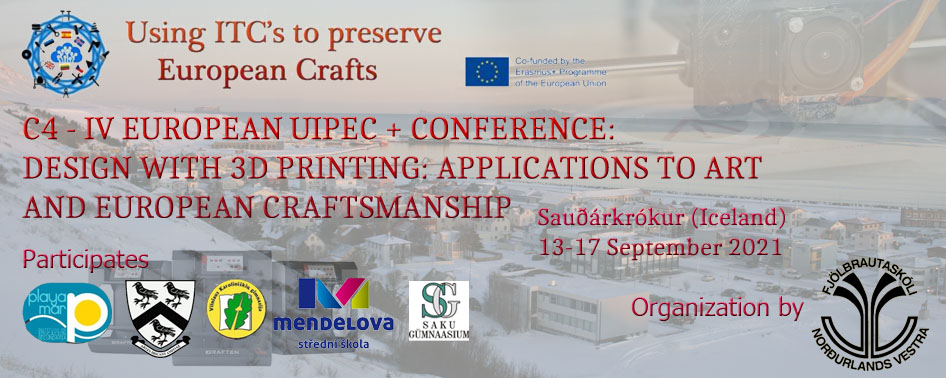
2 Teachers & 2-3 additional students for students Host schools *
11-09-2021 – 18-09-2021 –
Mandatory Activities by Project BLOCK V (VIRTUAL REALITY)
A24: Virtual Reality (VR) and Digital citizenship.
A25: Innovation and entrepreneurship with VR.
A26: VR applications to crafts.
A27: Craft in virtual games (minecraft).
A28: Neotelling with “App inventor”.
A29: Advanced Photoshop to promote crafts.

C5 V European Congress Czech R.
Originaly April 2021 –> Moved to April 2022
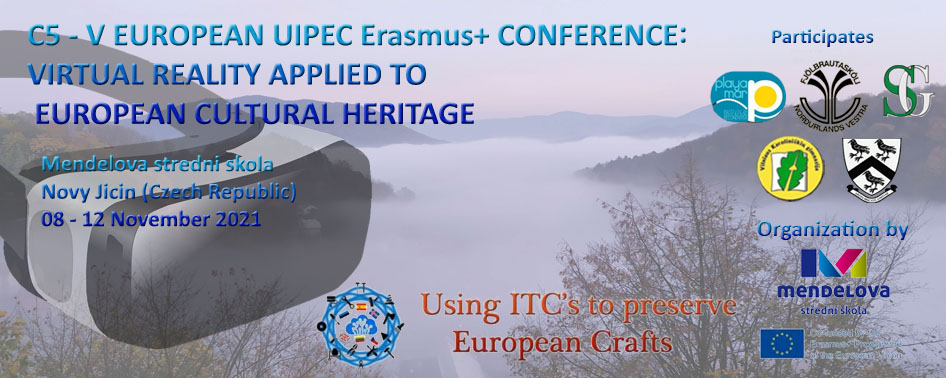
2 Teachers & 3 additional students for students Host schools *
Mandatory Activities by Project : BLOCK IV (3D PRINTING)
A18: 3D Printing Technologies.
A19: Software to design.
A20: FDM printing.
A21: Materials for 3D printing.
A22: Workflow: From design to 3D printing.
A23: Postprocessed after 3D printing
More info: http://eucrafts.eu/mobility-c5-czech-republic/

C3 VI European Congress: Lithuania
Originaly April 2021 –> Moved to April 2022
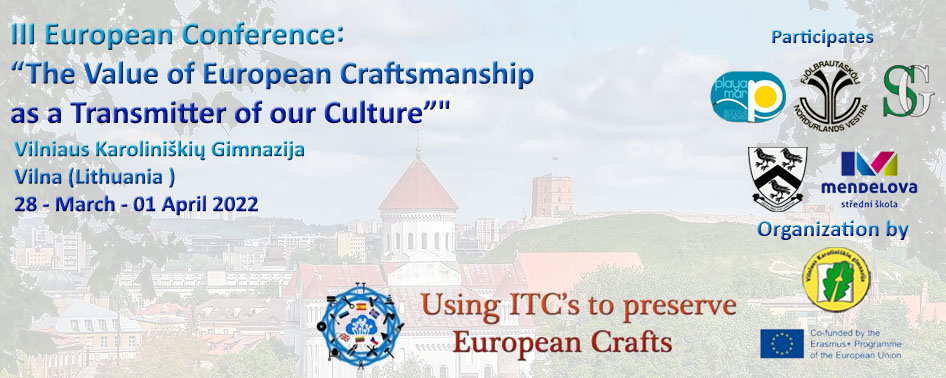
7 Students & 2 Teachers
Mandatory Activities by Project BLOCK III (HANDCRAFT)
A12: Visual Thinking.
A13: Craft as a cultural industry.
A14: Design as a transmission of culture.
A15: Psychology of color and visual codes.
A16: Historical milestones in European crafts.
A17: Crafts in traditional gastronomy.

C6 VI European Congress: Estonia
Originaly May 2020 –> Moved to October 2020 –> Moved to April 2022
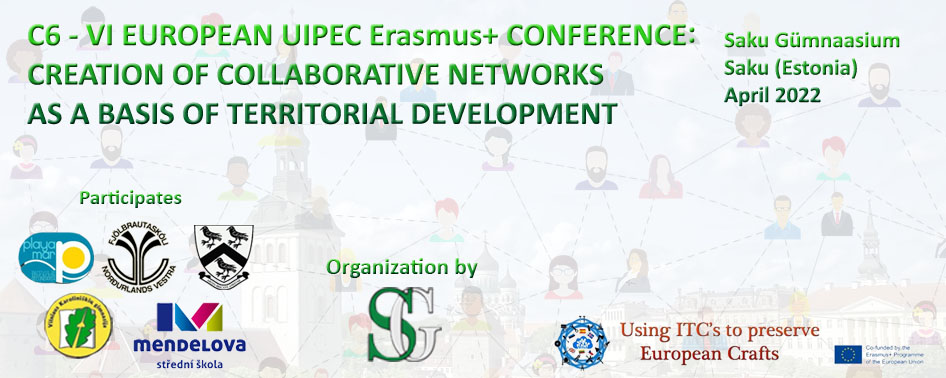
7 Students & 2 Teachers
Mandatory Activities by Project BLOCK VI (NETWORKS AND FINAL PRODUCTS)
A30: Wayfinding: a window to creativity.
A31: Create collaborative networks with the artisanal sector.
A32: Videographic exhibition of ancestral trades in Europe.
A33: Handicraft Students Entrerprises mini-fair.
A34: Official presentation of final products.

Shared Mobilities GBPE & UIPEC
Three of the six school have developed additional activities in a another common project GBPE
Shared GBPE C3 VI European Congress: Portugal : Programing, Entreprenurship Art & Crafts

More info http://eucrafts.eu/shared-gbpe-uipec-portugal-mobility-c3/
This Mobility C3 in Portugal, has been configurated as the 3nd European Congress: “Programing, Entreprenurship Art & Crafts ” of the Project GBPE with activities for UIPEC project.
Shared GBPE C4 VI European Congress: Spain

More info http://eucrafts.eu/shared-mobility-gbpe-c4-spain/
This Shared Mobility GBPE C4 Spain , has been configurated as the 4th European Congress: “Innovative tools For ICT Learning” As 3 of the 5 patners (Spain, Iceland & Czech Republic ) of the project are part of the UIPEC Project, which has some commons objetives, we have created some activities which are helpfull to both projects.
Working Session 5&6 Final Agreements & Documentation
The Last Working Sessions of C1 Mobility were made at 8th of november 2019 In this meeting we establish the Final Agreements & Documentation , We resolved all important iusses about budget and other questions.
This final document recopilates some importante information about the project How ever The dates of this document may change if neccessary so please check the updated ones in this LINK of UPdates Mobilities C1
* There is a change in the document the C3 estonia meeting will be from 27 April to 1 May 2020 .

We developed this final document

